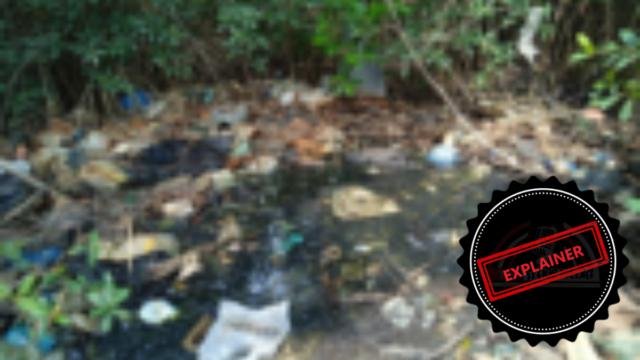
As climate change and its impacts grow more acute, quality climate resilience is crucial to improving understanding of the dangers and solutions while holding those in power to account.
We look at what is like for people in climate-vulnerable communities within the wetland, taking steps geared towards protecting the ecological integrity of the wetlands where they reside.
A wetland is an ecosystem within itself, which is defined by the presence of water flowing that supports an array of unique plant and animal life.
“Liberia’s wetlands continue to be degraded at an alarming rate due to immense human activities such as illegal human settlement and construction of buildings, dumping of wastes, pit sawing, cutting of the mangroves for firewood and charcoal, illegal and unregulated artisanal mining, wildlife hunting, illegal, unregulated and unreported fishing activities and many more,” Wilson Tarpeh, Environment Protection Agency (EPA) boss recently told partners.
All these activities, Tarpeh mentioned, continue to undermine the ecological integrity of Liberia’s wetlands.
Wetlands play an important and critical role in the ecosystem such that they serve as habitats for plants and animal species, and also a habitat for marine fishes to lay their eggs.
They at the same time help to absorb the amount of water found within our habitat and filter all the waters that enter this ecosystem. Wetlands also aid in detoxifying harmful substances, serve as a flood protector, and serve as a habitat for the nutrients of our soils.
The EPA undertook a major demolition exercise of buildings that were erected in the Mesurado Wetland particularly along the SKD Boulevard in Paynesville and its environs.
The demolition exercise was intended to mitigate the indiscriminate and illegal construction of buildings especially within Monrovia and its environs, which continue to undermine the integrity of wetlands. However, the situation persists, while construction activities in this area have doubled in recent months.

Levi Piah, EPA National Focus Point, Ramsar Convention, said if people are forcibly removed from the wetlands, more societal issues may develop.
“As per the Environmental Protection Law of 2003, the EPA as a single entity is not alone when it comes to the responsibility of protecting Wetlands,” Piah said.
Piah named the Forest Development Authority, Liberia Land Authority, and the Ministry of Public Works as some of the line Ministries, Agencies, and Commission the EPA works with to protect Wetlands.
The Mesurado Wetland is one of the five Ramsar sites in Liberia that has been designated as Wetlands of International Importance by the Ramsar Convention.
Although Piah was unable to put a number on the destruction of Liberia’s wetlands, he insisted that it is frightening for attempts to combat climate change.
“The degradation has been so alarming especially when the country got stable after the civil war, when human activities began more in Montserrado County in particular, and more rural-urban migration started going on. More people started to settle here and there and most of the wetlands began to get degraded within the Montserrado Wetland,” Piah said.
According to research, direct habitat loss, the addition of suspended solids, and altered water levels and flow patterns are the impacts of building activities in marsh regions that cause the most environmental harm.
In an effort to handle the situation, Piah disclosed that the EPA has given some locals Eco-stoves so as to stop them from cutting the mangroves.
However, Sheikh Sheriff, an environmental specialist, raises alarming concerns about the deterioration of Liberia’s wetlands and links it to metropolitan overpopulation.
“Monrovia was originally built for 500,000 or between 100,000 and 300,000 people but due to the civil crisis in the 90s and onward to the early 2000s, you have currently over a million people here in Monrovia. He continues “You have an increase in the waste management problems for the local populations because of the people in Liberia, over a million people in Monrovia.”
He said there are no clear strategies on how to dispose of waste, especially plastic waste, stating that because of the overpopulation of the capital city, people find it difficult to dispose of this waste and now they look to the wetlands as a means of getting rid of this waste.
Sheriff suggests educating the public about the significance of protecting wetlands and raising the consciousness of the need to improve the management of the marine coastal environment in order to handle this issue.
“I am not sure the government is in the right capacity to provide the requisite funding to support the full application and implementation of the Environmental protection law of Liberia, and I think enforcement is very costly and I am sure that the Environmental agency is working keenly on that but a very good start on that is awareness.”
He narrated: “56 percent of the population is along the coastal lines, which tells you that the Marine environment, the Wetlands, the Salt Marshes, the mangroves, all those links to the marine coast need to be taken care of with urgency.”
Oganti Letona has lived around the 72nd wetland for years. He says mangroves block some of the gusts along the coastal defense, so when the mangroves are cut, there will be nothing to hold the breeze, something that could eventually lead to properties being destroyed.
“That is why we have been going through a series of training on how to protect the wetland. We’ve stopped people from cutting the mangroves because if they are cut, you wouldn’t be able to do anything.”
Ociwuche Daniel is one of those involved in construction activities along the 72nd wetland.

He operates a block factory and building material store in the area.
“We are not doing any illegal thing here. We bought this place in 2005 and built our store and block factory here. I want to let Liberian people know that this business is registered. We are not stealing from the Liberian people or government.”
Daniel disagreed with his construction in the wetland or contributed to the saying: “We are even far from the drainage; we are about 45 to 50 feet away from the drainage. So, we are not contributing to any denigration of the wetland.”
46-year-old James K. Sumo is another resident who has lived in the area since 1998 and attributes the situation to the failure of the EPA to properly enforce its construction policy on wetlands.
He mentioned that most of the shops and entertainment centers along SKD Boulevard are built in the wetland but have never been affected by EPA’s enforcement exercises. This, he believes, is giving rise to many construction activities in the area.




